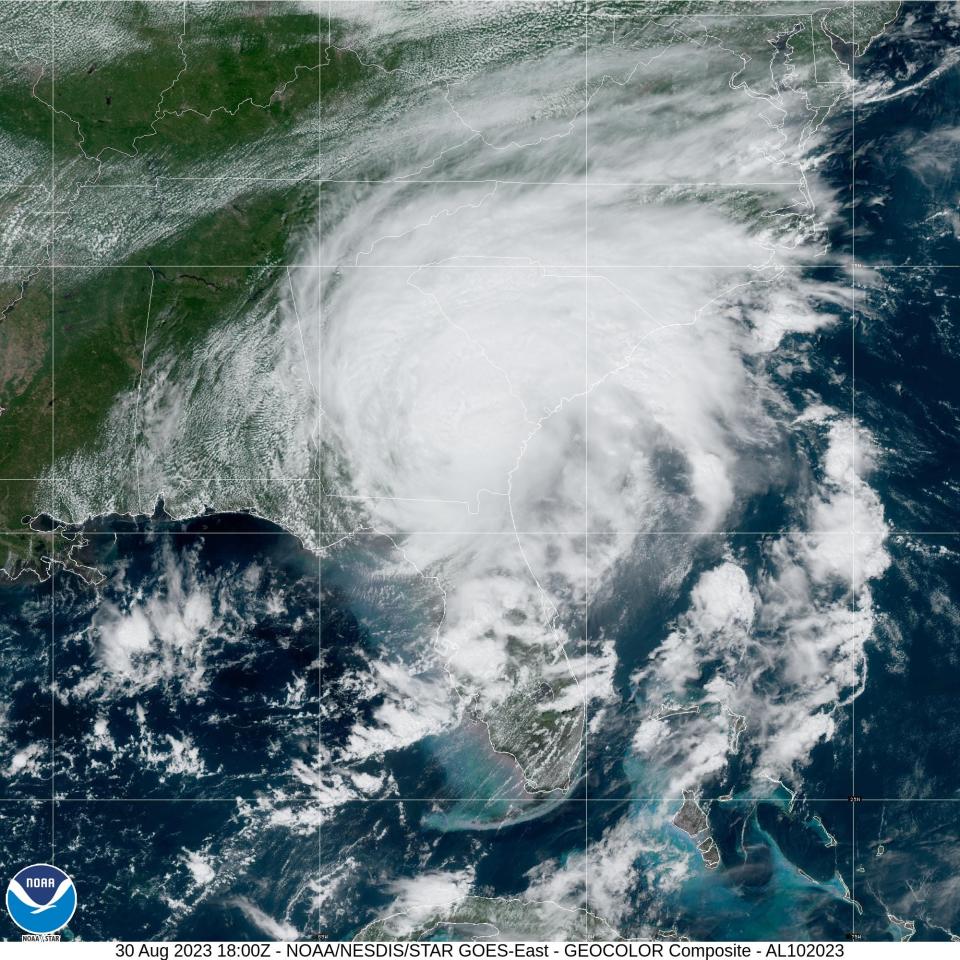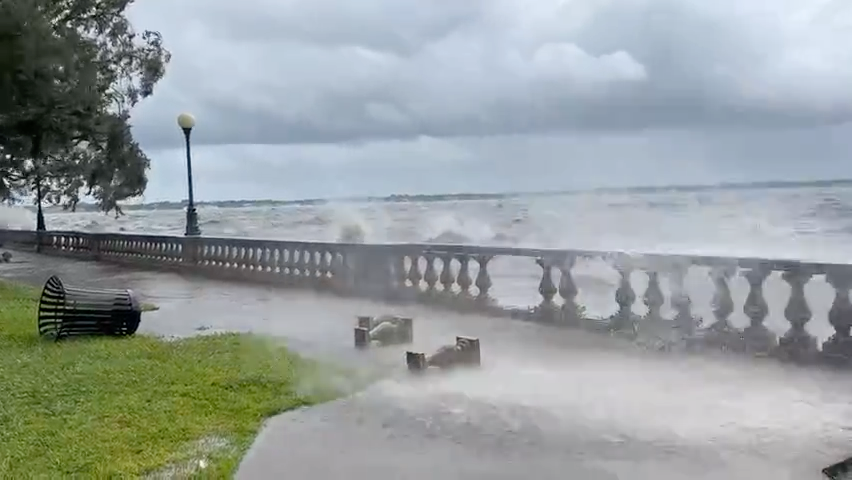How do hurricanes get their name? Here's what to know
Category 3 Hurricane Idalia is powering across the Georgia border Wednesday following landfall along Florida's Big Bend.
Just a little over a week after Hurricane Hilary ran through the Baja California Peninsula and the southwestern U.S., the eventful season has produced tropical system's along both the Pacific and Atlantic coasts.
Here is how these big storms get their names.
Why are hurricanes named?
Hurricanes were initially titled using latitude-longitude numbers.
This method made it easy for meteorologists to track storms, but not for people looking for information to prepare or flee their path of destruction.
Forecasters later learned that short, distinctive names for tropical storms and hurricanes improved communication and helped avoid confusion.

How are hurricanes named?
In 1950, the U.S. National Hurricane Center began the formal practice of naming storms that develop in the Atlantic basin. The World Meteorological Organization (WMO) now maintains and continues to update the list.
Storms were originally identified through a phonetic alphabet, such as Adam, Baker, Charlie, and the same names were used during subsequent hurricane seasons.
In 1953, however, the organization revised the confusing method and started naming storms after women.
The system was then changed again in 1978 to what it is today.
Meteorologists now switch between female and male names from six lists that are used in rotation and recycled every six years.

These lists ultimately are broken down by location and name, with potential tropical storms being separated by their origin either in the Atlantic, Eastern North Pacific or Central North Pacific.
No Q, U, X, Y or Z names are on the list, for obvious reasons.
If more than 21 storms form in one season, like in 2005, meteorologists will enlist the Greek alphabet to name the surplus storms.
When are storm names retired?
The only time a change will be made to the hurricane list is when a storm name is retired.
Infamous hurricanes that are particularly damaging and deadly are retired for historical and legal reasons, according to NOAA.
The WMO will strike the name from the list during its annual meeting and choose another to replace it.
For example, Katrina was taken off in 2005 after Hurricane Katrina's devastation in New Orleans.
That year, five names were retired, setting a new record. 2017 came close to tying this feat, as the year saw four names be removed - Harvey, Irma, Maria and Nate.
"No one will forget Katrina or Sandy because they associate those names with a particular storm," Susan Buchanan, a spokeswoman at the National Weather Service, told ABC News in 2017.
Since 2005, 33 names in total have been retired from the list - 28 from the Atlantic and 5 from the Central and Eastern North Pacific.
Pending the outcome of Hurricane Idalia, the number could jump to 34.
Republic reporter Cydney Henderson contributed to this article.
This article originally appeared on Arizona Republic: How hurricanes get their names

